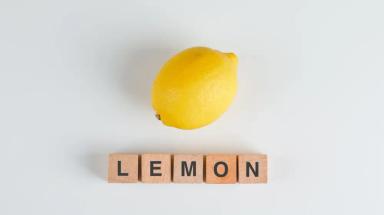Summary
Captions are the written representation of audiovisual content that targets the deaf and hard of hearing. Subtitles are the translation of audiovisual content for the ones who don’t understand the original language of the content. Both captions and subtitles have many benefits and captions have many types and can be used in so many fields.
Get our subtitling and captions translation now
What are captions?
Captions can have many meanings based on the context. The first meaning can be a description of a visual representation such as an image or a poster. However, when it comes to the context of subtitling, it means the written content of an audible file or a video for the deaf and hard of hearing. Captions are used in nearly all fields including legal, medical, and economic, and in all types of audiovisual files such as documentaries, videos, recordings, movies, series, ads, campaigns, etc.
Get our creative writing services now
What are subtitles?
Subtitles are the translation of transcribed content or simply the translation of audible content from one language into another. It can be used for many reasons and in all fields such as psychology, entertainment, and business, and it can be used on all types of audiovisual files including documentaries, recorded meetings, lectures, ads, movies, series, videos, voice recording, etc. They are typically used for individuals who don’t understand the source language.
Subtitling Made Simple: Tips and Techniques for Learning
What is the difference between captions and subtitles?
While captions and subtitles are sometimes used interchangeably, and while they might have close meanings, however, they do not have the exact same definition. Each has its own purpose. Captions typically mean the written content of an audiovisual file that is designed for viewers and users who are unable to hear the audio in that file. It mainly targets the deaf and the hard of hearing.
On the other hand, subtitles mean the translated version of the audiovisual file for the viewers and users who are able to hear the audible content but are unable to understand the language that is spoken in the file. Subtitles for the deaf and hard of hearing is also an option when it comes to people who do not understand the source language and need captions in the language they understand.
In a nutshell, captions target the deaf and hard of hearing who are unable to listen to the audible content, whereas subtitles target the people who are unable to understand the spoken language of the audible file.
The Difference Between Subtitles and Dubbing
What are the different types of captions?
There are typically two main types of captions: closed captions or what some might recognize as CC and open captions.
Many consider subtitles and subtitles for the deaf and hard of hearing types of captions as well.
Closed Captions:
Closed captions, which are the most commonly used type of captions, are considered an option that viewers can switch on or switch off whilst watching, based on their preference. It is usually a separate file. Closed captions are a type of captions that include all noises and voices of the audiovisual file such as laughs, clearing throats, giggles, phone ringing, screams, and even silence. It covers all voices, no matter what they were.
Open Captions:
Open captions are a part of the audiovisual file or the video itself and cannot be switched off. It is a written text of audible content. Open captions are in view all the time. They don’t necessarily cover all background noises and voices.
Subtitles:
Subtitles can be considered a type of caption that consists of the translation of the audible content for people who are unable to understand the spoken language of the file. It can be used for all audiovisual files such as documentaries, videos, ads, series, movies, voice recordings, lectures, interviews, and many more.
Subtitles for the deaf and hard of hearing:
Subtitles for the deaf and hard of hearing, or what might be known as SDH, is the translation of the captions that are used to assist the deaf and hard of hearing in following the audiovisual file. Subtitles for the deaf and hard of hearing are seen as a type that merges both captions and subtitles.
Get our audio transcription services now
What are the benefits of subtitles and captions?
When it comes to the benefits of subtitles and captions, it is mandatory to mention that they are many and that the majority of people and businesses are using them more as the days go by.
The benefits of subtitles and captions include the following:
Reaching more audience
Subtitles and captions make it possible to reach more audiences from all around the world. This means that local audiovisual content and files can be used worldwide and more people have access to them since they are able to understand what is being said.
Reaching the deaf and hard of hearing
Even the deaf and hard of hearing are able to benefit from both subtitles and captions since it makes it possible for them to be included, rather than excluded from everything that is happening around the world.
Learning new languages
Captions and subtitles make it possible for everyone to learn a new language. By watching a video or listening to audible files, people can read the translation at the same time as speaking, which results in learning new languages.
Spreading awareness
When it comes to ads, lectures, recorded workshops, awareness movies or series, and even documentaries, both subtitles and captions assist individuals in spreading awareness about topics and subjects that are important and that aren’t tackled in their countries of origin.
Enhancing focus
Many individuals have a hard time following long videos. For that reason, they have the option of adding subtitles to be able to follow the spoken content even if they understand the source language. Having subtitles in the language you speak can help you stay focused and pay attention to what is said and even prevents distractions.
Improving one’s language
People are able to improve and enhance their language by reading what they are listening to at the same time. It also helps them write correctly and learn more about grammar, spelling, and punctuation, and they can understand what they are unable to understand by only listening to what is being said. It even helps identify incomprehensive words from different accents.
Get our writing services now
Highlighting important details
In audiovisual files such as voice recordings, ads, campaigns, and even videos, captions and subtitles can highlight important details and information such as specific amounts, phone numbers, addresses, and other related information.
Beneficial for researchers
Researchers who have to have a written representation of what is being spoken can benefit from captions and subtitles. They can read instead of watch and rewind all the time. It makes the whole process faster and much easier.
Get our Arabic to English - English to Arabic Translation
Comprehensive in noisy environments
More often than not, individuals might find themselves needing to have subtitles and captions to be able to understand what is being said when they are in noisy places. For that reason, they can make use of subtitles and captions to be able to immediately watch a video or listen to a recording.
Audiovisual translation subtitling
Audiovisual translation subtitling typically means the conversion of spoken content to written content, from one language to another. Whether it be a video, a series, a movie, an ad, a documentary, a lecture, an interview, a recording, or anything else that is audible, experts are able to accurately and professionally convert the exact same spoken content to written content.
Audiovisual translation dubbing
Audiovisual translation dubbing is the translation of audiovisual content and lip-syncing it. This process consists of replacing the voice track of the source language with the voice track of the target language. It is done in a way that sounds natural. The entire visual content stays the same, but the audible content changes.
It is used for so many reasons, especially since individuals might prefer to have the voice itself changed to a language they understand rather than having to read the subtitles. Videos, ads, movies, series, interviews, and even documentaries can include options such as audiovisual translation dubbing.
Beyond Subtitles: Exploring the Various Types of Audiovisual Translation
What is the importance of accuracy in captions and subtitles?
Usually, captions and subtitles aim at conveying everything that is being said in the audiovisual file to written content. This means that the written content should always be one hundred percent accurate, and it should respect the original file and the spoken content. That is why some refer to closed captions since they would like to know each and every noise that has been made.
For that reason, and since captions and subtitles should include everything that is spoken, they must always be accurate. People who handle captions and subtitles are called to convey everything; they don’t have the right to add, omit, or even correct or change what was said. It is even so important to proofread everything once the process of captions and subtitles is done, to make sure that everything is included, accurate, and correct.
Get our news translation now
In which fields can captions and subtitles be used?
Captions and subtitles can be used in all fields and for various reasons. These fields include:
Legal field:
Captions and subtitles can be used in the legal field in files that contain important evidence in other languages for example. Even if it’s an informative video, when it comes to the legal field, it is always advised to have captions and subtitles. This way, one can make sure that everything is understandable.
Medical field:
In the medical field, captions and subtitles are very important. For consultations, sessions, surgeries, and even in documentaries, captions, and subtitles ensure that the medical terminology is well translated and highlighted. It can even help pay close attention to details such as duration, amounts, numbers, etc.
Academic field:
When it comes to lectures, conferences, documentaries, or short movies, in the academic field, captions, and subtitles are very important. It helps students stay focused and understand what is being said if they aren’t fluent in the language of the audio or the video.
Technical field:
From tutorials to documentaries, and short movies, in the technical field, subtitles and captions are of great importance. It helps spread new discoveries and technologies. It even helps individuals use their devices and machines correctly for example if the videos were in another language.
Get our translation and writing services now
What makes a good subtitler?
First of all, a subtitler must be a holder of a Bachelor Degree of Arts in Translation, since it is a translation-related task. However, that’s not all it takes to make a good and successful subtitler. Subtitling requires subtitlers to be specialized in the fields they work in, to be able to deliver more accurate outcomes and to even spend less time conducting research. Not to mention that it guarantees correct spelling and grammar. This increases productivity and efficiency.
Also, a good subtitler must be an excellent linguist who knows how to properly write without committing minor mistakes. Furthermore, subtitlers must be patient, since they might find themselves repeating the same part over and over again to be able to understand what was said.
Moreover, subtitlers must be fast, and they should always meet deadlines, no matter how tight. Last but not least, they must have strong analytical skills that allow them to analyze the content and know how to come up with the most convenient and appropriate outcomes and results.






